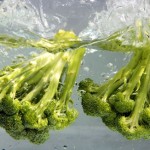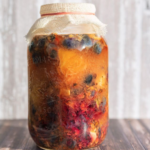Many of the world’s greatest winemakers could be found Thursday night in New York’s Times Square. They had not gathered to grab a show at the recently reopened theaters of Broadway. Rather, they came to lift glasses and toast being together again. After skipping 2020, the New York Wine Experience returned to the Marriott Marquis Times Square, celebrating the event’s 40th anniversary. The three-day event kicked off with the first of two Grand Tastings, as 210 wineries poured some of the world’s most coveted wines for consumers, all of them rated 90 points or higher by Wine Spectator’s editors.
The unspoken toast as glasses of Champagne were raised? We’re back.
“It’s so good to be here in person, to see everyone together,” said Italian wine icon Piero Antinori, who presented his 1997 Solaia as a Wine Star during the weekend’s seminars. Over the past 19 months, many vintners have struggled to travel and meet with longtime clients and potential new ones. They’ve learned to host virtual tastings. They’ve also learned that there is no substitute for giving someone a fist bump and telling wine lovers face-to-face what makes their wine unique.
[article-img-container][src=2021-10/nywe21_gt_antinoridallavalle102122_1600.jpg] [credit= (Daphne Youree)] [alt= Italian vintner Piero Antinori, California vintner Naoko Dalla Valle, Antinori chief winemaker Renzo Cotarella, winemaker Maya Dalla Valle at the 2021 Grand Tasting ][end: article-img-container]
There was electricity in the air as attendees headed into two ballrooms. There were also new procedures to navigate, with a strict COVID vaccine mandate in place for large events.
Once guests were in the door, there was another obstacle to negotiate: Where to start? Not only did all 210 wines earn 90 points or more, 91 of them scored classic ratings of 95 points or better.
Many followed the vintners’ example and began with Champagne. They could sample Bollinger Brut Champagne La Grande Année 2012 or Krug Brut Champagne Grande Cuvée 169ème Édition NV or Piper-Heidsieck Brut Champagne Rare 1998, which earned 98 points.
[article-img-container][src=2021-10/nywe21_gt_taylorfladgatepouring102122_1600.jpg] [credit= (Daphne Youree)] [alt= A woman pouring from a bottle of Taylor Fladgate 40 Year Old Tawny Port into a glass ][end: article-img-container]
They could also explore the incredible sparkling wines of other regions, such as California’s Schramsberg Reserve North Coast 2011 or Italy’s Ferrari Extra Brut Trento Perlé Nero Riserva 2012.
How about Chardonnay? Guests could choose between the opulence of California and Australia or the vibrance of Burgundy. There was the Arista Chardonnay Russian River Valley Ritchie Vineyard 2018 or the Domaine Laroche Chablis Les Blanchots La Réserve de l’Obédience 2019.
“It’s nice to see old friends … [the atmosphere is] energizing,” said winemaker Mark Aubert, who was pouring his Chardonnay Sonoma Coast Powder House 2018 at the Grand Tasting and would be presenting his Pinot Noir Sonoma Coast UV Vineyard 2018, Wine Spectator‘s No. 2 Wine of 2020, at the Saturday afternoon Top 10 seminar. “We’re looking forward to many more Wine Experiences to come. It’s the best wine event in the country.”
[article-img-container][src=2021-10/nywe21_gt_aubert102122_900.jpg] [credit= (Daphne Youree)] [alt= California vintners Mark and Teresa Aubert ][end: article-img-container]
What if you prefer pink? Several premium rosés were on hand, including the traditional Domaines Ott Côtes de Provence Rosé Château de Selle 2020 and the modern upstart Château d’Esclans Côtes de Provence Rosé Garrus 2019.
For Pinotphiles, examples abounded from California, Oregon, Burgundy and more, such as Siduri Pinot Noir Russian River Valley Barbieri Vineyard 2017, Lingua Franca Pinot Noir Eola-Amity Hills Lingua Franca Estate 2016 and Domaine Faiveley Corton Clos des Cortons Faiveley 2016.
For wine lovers and vintners, the Grand Tasting is a chance to taste old favorites and discover new ones. Ever wonder what the fuss is about Bordeaux? You could educate your palate with Château Cheval-Blanc 2011, Château Cos-d’Estournel 2016, Château Haut-Brion 2011 and Château La Fleur-Pétrus 2010, which earned a stellar 98 points.
[article-img-container][src=2021-10/nywe21_gt_4guests102122_1600.jpg] [credit= (Daphne Youree)] [alt= Four guest enjoying the 2021 Grand Tasting ][end: article-img-container]
And what of Napa? Offerings included Accendo Cellars 2016, Dalla Valle Maya 2018, Diamond Creek Red Rock Terrace 2018 and Orin Swift Papillon Napa Valley 2018. Or you could explore Italy with Vietti Barolo Lazzarito 2016, Biondi-Santi Brunello Tenuta Greppo 2015 and Ornellaia Bolgheri Superiore 2011, among others. Spain, Portugal and Germany, Argentina and Chile, Australia and New Zealand were all represented, but so were Uruguay, Israel, Virginia and others.
For winemakers, the Grand Tasting is a chance to meet some of wine’s most passionate fans. It’s also a chance to learn about their fellow vintners. Erik Elliott, estate manager of Napa’s Heitz Cellar, stood next to the team from Château Léoville Las Cases. Australia’s irreverent Mollydooker was a booth away from Southern Italy’s historic Mastroberardino.
“It’s just so wonderful to see old friends and make new ones,” said Sharon Staglin as she poured her family’s Napa Cabernet.
[article-img-container][src=2021-10/nywe21_gt_garzonzonin102122_900.jpg] [credit= (Daphne Youree)] [alt= Bodega Garzón founder Alejandro Bulgheroni, managing director Christian Wylie pour the 2017 Balasto red blend from Uruguay for Italian vintner Francesco Zonin.][end: article-img-container]
We’ve developed a habit this century—one marked so far by rapidly evolving technology, a dangerously shifting climate and a global pandemic—of saying that we live in unprecedented times. Wine tells us otherwise. It has survived pandemics, from Spanish flu to the Black Death. It has persisted through world wars. American wine somehow persisted through Prohibition to evolve into some of the best in the world.
Wine has experienced it all. And we keep coming back to it, in good times and difficult, because it persists in bringing people together, no matter where they’re from, to taste, to toast, to celebrate.
Grand Tasting Photo Gallery
Photos by Daphne Youree





















































 Photo by Jessica Pescush
Photo by Jessica Pescush


 Total Time:
Total Time: Yield:
Yield:








